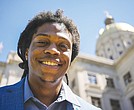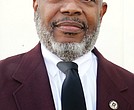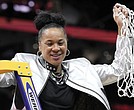Celebrating ‘the voice of Black America’, by Marc H. Morial
6/8/2023, 6 p.m.
“Show me a person who is full of prejudice, and I will show you a sick, unhappy, fearful individual who is not going anywhere and who is not growing. People don’t shut other people out; they fence themselves in.” – Whitney M. Young Jr.
It was 20 years ago this week that I humbly assumed the responsibilities of leadership of the National Urban League—one of which is the honor to author this very column, To Be Equal, established by the esteemed Whitney M. Young Jr.
The column shares its name and takes its inspiration from Mr. Young’s first full-length book, published on New Year’s Day, 1964, in the wake of what Mr. Young called “the year of the Negro Revolution,” a year that saw thousands of children, marching through Birmingham, Ala., attacked by police dogs and blasted with firehoses; the Woolworth’s lunch counter sit-in in Jackson, Miss.; Gov. George W. Wallace’s Stand in the Schoolhouse Door at the University of Alabama; the assassination of Medgar Evers; the March on Washington for Jobs and Justice; and the deadly bombing of Birmingham’s 16th Street Baptist Church.
The first To Be Equal column to be published in New York’s Amsterdam News was headlined, “How Much Are Negroes Worth?” Mr. Young recounted his conversation with “a middle-aged white housewife” who declared she harbored no prejudice against Black Americans but could not comprehend the push to desegregate schools. “Her arguments against school integration, it turned out, were directed against sending her children to slum schools,” Mr. Young wrote. “But supposedly there is nothing wrong with sending Negro children to slum schools.”
The last To Be Equal column published under Mr. Young’s byline ran three weeks after his tragic March 11, 1971, drowning in Nigeria and consisted of excerpts of his various speeches. The last column he authored, also published after his death and headlined, “Old Story, New Beginning,” concerned his efforts as part of a special commission tasked with updating the recommendations of the National Advisory Commission on Civil Disorders, also known as the Kerner Commission.
“The Kerner report’s sound recommendations have been ignored, and concerned citizens are going to have to put some muscle into their principles if this nation is to survive,” Mr. Young wrote. “The Kerner Commission recommended, among other things, greater concern by private citizens, and it’s good to note that at a time when many private groups are simply throwing up their hands and refusing to become involved, at least one national organization has devised an imaginative new program.”
That national organization was the National Conference of Christians and Jews, and the imaginative new program was the National Committee for Commitment to Brotherhood, formed to support the work of the National Urban League, NAACP, and Southern Christian Leadership Conference.
The first To Be Equal to be published after Mr. Young’s death was authored by Harold R. Sims, who served as the National Urban League’s acting executive director until the appointment of Vernon E. Jordan. Appropriately, it was a tribute to Mr. Young headlined “Nation Mourns A Great Leader.”
“Whitney Young was a man who transcended the boundaries of race, nationality, and ideology,” Mr. Sims wrote. “He was a man who formed a human bridge between the rich and the poor, the white and the black, the conservative and the liberal. Labels simply don’t apply to such a universal man.”
Each of Mr. Young’s successors has continued to publish To Be Equal, and it has been my honor to uphold the tradition as he intended it to be, “the voice of Black America.”







